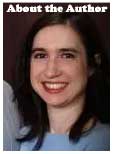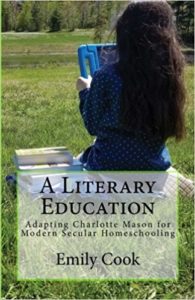Homeschool Tidbits: Morning Baskets Part II – Recommended Resources
April 1, 2022
Welcome to Build Your Library’s Homeschool Tidbits: Episode 12 – Morning Baskets Part II: Recommended Resources! In this weekly video series, I will delve briefly into a topic related to homeschooling and will share some of my knowledge and expertise as a long-time homeschooling mother of 4 children. Three of whom have graduated!
Last week I shared about Morning Baskets, and how I use them in our homeschool. I hope that over the course of that video, I convinced you to give morning baskets a try in your own homeschool!
Today I thought it would be fun and helpful to share some resources that we have used in our Morning Baskets over the last few years. I’m going to do this by topic to keep it semi-organized. Just remember, morning baskets can be whatever you want or need them to be! You don’t have to do them the same way that I do. Make it work for your homeschool!
How I use Morning Baskets in our Homeschool
For our Morning Baskets, I have set books for our dailies, and then a rotation of books under various topics. Mondays are for mythology. On Tuesday we read about fascinating people throughout history. Wednesdays are for geography, specifically focusing on studying the 50 states this year. Thursday is art appreciation, and Friday we study philosophy and critical thinking skills. We’ve used this rotation for the last 2 years and it has served us well. So today, I’m going to share some recommendations based on those main topics.
Poetry:
We read a poem every day, something I started doing a few years back. My daughter has insisted we continue. We rotate resources, but currently, we are reading through Favorite Poems Old and New by Helen Farris. This selection is definitely a classic.
We’ve also loved the National Geographic poetry books – Nature Poetry, Animal Poetry, and The Poetry of US. These all have absolutely stunning photography throughout, and the poetry is lovely and age-appropriate.

Mythology:
I call this mythology, but in the past, this has encompassed world religions as well as folk tales and fairy tales. We are currently reading stories from the Tanakh, or Jewish bible. Here are some of my other favorite resources:
In the Beginning: Creation Stories from Around the World by Virginia Hamilton – I love this volume, because of the variety of cultures it covers. You get creation myths from all over the world!
D’Aulaires’ Book of Norse Myths and D’Aulaires’ Book of Greek Myths – I love how beautiful these books are, and they are well written as well. I attribute these books to my oldest daughters continued fascination with mythology.
Another great option that falls under this category is Aesop’s Fables. There are many beautiful editions of these classic stories. I really like this for beginning narration. These short tales are perfect for children just learning to narrate!
Fascinating People through History:
I really like the idea of introducing my daughter to amazing people in history. Honestly, she retains history so much better when we focus on just one person. She spent several years obsessed with Alexander Hamilton and learned quite a lot about the Revolutionary War by focusing on his life (thanks Lin Manuel Miranda!)
Some of the books we’ve enjoyed include Mightier Than the Sword: Rebels, Reformers, and Revolutionaries Who Changed the World Through Writing by Rochelle Melander. I LOVE this book. My oldest daughter is a creative writing major, so because of that, my youngest is also very interested in writing. This book has opened her eyes to so many different ways people have used writing to change the world. It’s a fantastic resource and perfect for Morning Basket time!
Herstory: 50 Women and Girls Who Shook Up the World by Katherine Halligan and Sarah Walsh – This is another great resource to cover amazing women through history that most history books don’t talk about. I like that it’s diverse and organized chronologically through history, making it easy to fit in stories that tie into the time period we are studying.
50 Trailblazers of the 50 States by Howard Megdal is a great resource if you are studying American History. We are using this along with our 50 States Study this year. We are really enjoying it, even though it’s a little bit young for my daughter. However, there have been several people covered that we haven’t studied before so it’s introduced us to some amazing people!
Geography:
This year, we are focusing on learning about the 50 States. In the past, we’ve also covered world geography. This could also be where you use flashcards, do map drills, or a workbook focusing on map skills.
Only In America: The Weird and Wonderful 50 States by Heather Alexander. We own a lot of books covering the 50 states, but I think this might be my favorite. It covers things that other books just don’t, like favorite foods, inventions, state slang, and even includes book recommendations for further reading! It’s big, colorful, and perfect for introducing children to the states.
I pair that with The United States of America Coloring Book by Jen Racine, which is just a lovely coloring book. My daughter colors while we read and I find it helps her focus.
We’ve also really enjoyed The Atlas Obscura Explorer’s Guide for the World’s Most Adventurous Kid by Dylan Thuras. This is the kid’s version of their adult book Atlas Obscura, and it’s beautiful and full of interesting information about cool places all over the world.
Art Appreciation:
My kids love art, so I’m always looking for great art appreciation resources to add to our morning basket. Things we’ve loved:
Vincent’s Starry Night and Other Stories: A Child’s History of Art by Michael Bird. I’ve raved about this book a lot, so it’s probably not new to you, but I always have this at hand. Sadly, my last homeschooling child is starting to outgrow it, but I adore it. It covers art history chronologically and focuses on one piece of art and how the artist came to make it. It’s a lovely addition to any history curriculum.
The Art Book for Children by Phaidon Press – the white book is easily available online, but unfortunately, the yellow book has become impossible to find. If you are lucky, it may pop up at a used bookstore or garage sale. But I love these for young children who are just beginning to discover art and artists. This series is great for helping them learn to look at great art, as well as helping you, the parent, guide your children through.
I also love the Children Should Know series. I use two of them in Level 1 of Build Your Library. My daughter and I have really enjoyed those as well as 13 Art Mysteries Children Should Know. There are several others in the series and I think they are great for adding art appreciation to your morning basket time!
Philosophy and Critical Thinking:
My favorite book for introducing children to philosophy is Big Idea for Young Thinkers: 20 Questions about Life and the Universe by Jamia Wilson. This is a fabulous book because it offers a diverse range of thinkers through history and modern-day. It covers topics like identity, life and death, truth, culture, and creativity. It’s a large book, perfect for reading through together.
Another great title we enjoy is Philosophy for Kids: 40 Fun Questions that Help You Wonder About Everything! by David White. This one is a bit more traditional than the Big Ideas book and works for an older audience. I like that both of these books lead children to think and we end up having great discussions. This is why I plan these types of books for Fridays. We generally have a lighter school day on Fridays so if we end up talking about what happens after we die for 2 hours, it’s not going to completely derail our homeschool routine.
For Critical Thinking, we love Think For Yourself: The Ultimate Guide to Critical Thinking in an Age of Information Overload by Andrea Debbink and Aaron Meshon. This is perfect for tweens, and it covers a lot of great topics like how to ask good questions and how to find evidence to support your beliefs. I like to rotate between this and the Crash Course video series on Media Literacy. I feel that those two things are giving my daughter a great foundation for learning how to think critically about the media she takes in.
Of course, you can use so many different things in your morning basket time. From games to videos, to books, to flashcards. Evaluate your homeschool, look through the materials you have on hand, particularly all those fun things you bought with the best intentions! Then put together something that works best for your family!
Let me know in the comments – what is your favorite resource that you include in your Morning Basket time?
Coming up next…
We will be skipping our tidbit next week, while I host a Tea with Emily Livestream on the Build Your Library Facebook page! We’re going to be discussing Homeschooling When Life Gets Busy! So be sure to check that out! Homeschool Tidbits will resume back the week after.
Until next time, happy reading!
Disclosure: This list contains affiliate links, meaning I get a small commission if you make a purchase through my links, at no cost to you.
See Also:
Charlotte Mason in the Secular Homeschool
A Literary Education book
About Build Your Library
Homeschool Tidbits: Build Your Library’s Weekly Video Blog Series
 Emily Cook is the author and creator of the secular homeschool curriculum Build Your Library, a literature-based K-12 program infused with the teachings of Charlotte Mason. She writes full-year lesson plans as well as shorter topical unit studies. Emily has been homeschooling her four children in Southern NH for 21 years. She is passionate about reading aloud to children of all ages and loves to share her love of literature with others. She and her family also make incredibly dorky videos about homeschooling, books, and more on Youtube at ARRRGH! Schooling. You can follow her on Facebook, Twitter, and Pinterest. You can also check out her author page on Amazon.
Emily Cook is the author and creator of the secular homeschool curriculum Build Your Library, a literature-based K-12 program infused with the teachings of Charlotte Mason. She writes full-year lesson plans as well as shorter topical unit studies. Emily has been homeschooling her four children in Southern NH for 21 years. She is passionate about reading aloud to children of all ages and loves to share her love of literature with others. She and her family also make incredibly dorky videos about homeschooling, books, and more on Youtube at ARRRGH! Schooling. You can follow her on Facebook, Twitter, and Pinterest. You can also check out her author page on Amazon.













